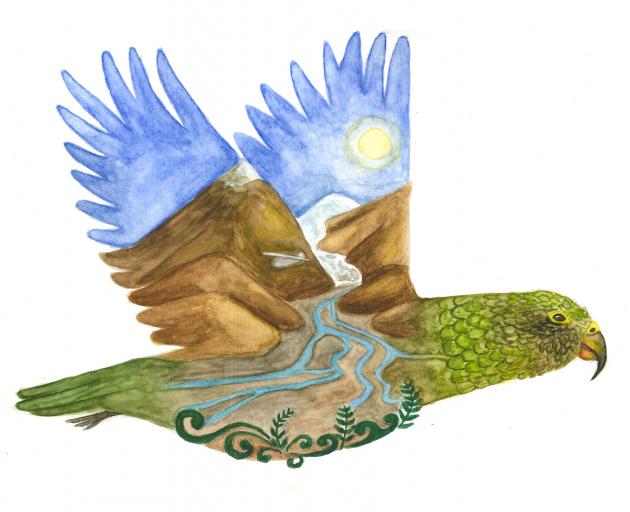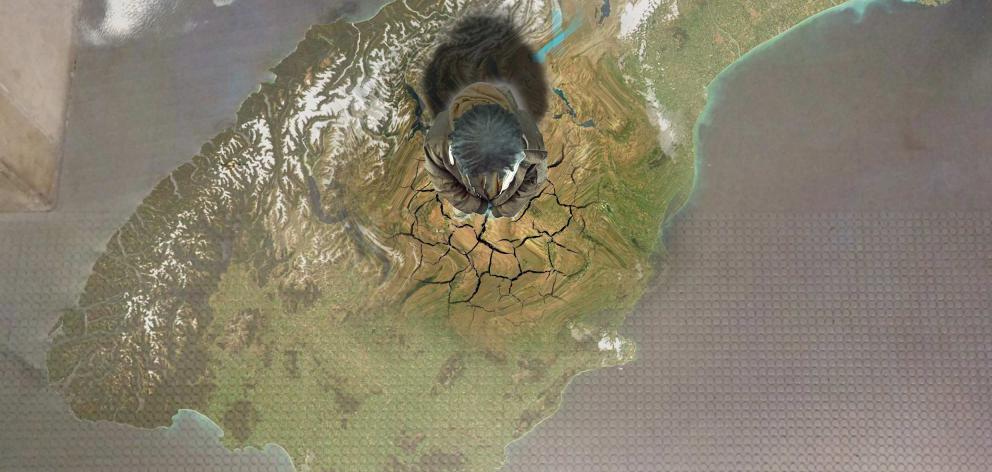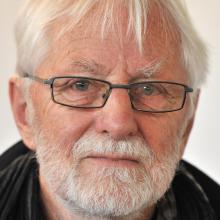
There is a range of intersecting lines of thought at Otago Polytechnic Dunedin School of Art’s (DSA) latest symposium, chief among them the collision of creative endeavour with ecological and environmental concerns.
"Art and Future: Energy, Climate, Cultures" combines an exhibition at the DSA gallery (from Monday, October 10 until Friday, October 21) with a two-day symposium (on Friday and Saturday, October 14 and 15) and follows several similar events, including "Illustrating the Unseeable: Reconnecting Art and Science" (2009) and "Art and Design" (2015).

In collaboration with the Centre for Sustainability and the Centre for Science Communication at the University of Otago, the DSA’s eighth symposium initially focused on the question: what sort of art might we see in the future?
"That was then overtaken by another question, of what role might art play as an agent of change in the future," Stupples says.


"As it turns out, the sessions on Saturday focus more on South Dunedin. We thought we’d hold some of the Saturday afternoon session in the Dunedin Gasworks, which are built on the highest part of South Dunedin.
"A group from the Otago Sculpture Trust, including Peter Nicholls, are involved in conceptualising a water park in South Dunedin. Lawrie Forbes and Stuart Griffiths have come up with the idea of The South Dunedin Ark, a boat that would be situated, perhaps, on Nicholls’ water park."
As its title suggests, The South Dunedin Ark is a concept that plays with the idea of exhibiting and storing information on the social history and ecology of the area. It is based on predictions that rising sea levels might one day inundate South Dunedin.
That artwork, along with various other pieces within the exhibition, will be examined by a range of speakers at the two-day symposium.
For instance, Dunedin academic and artist Dr Louisa Baillie will raise the question: can art contribute positively to the South Dunedin community, serving as an agency of change?
Dr Baillie says the impetus to present at the symposium was prompted by the disastrous June 2015 South Dunedin flood.
Asked if some might regard art as a non-practical means of addressing very real issues, Dr Baillie says art might be considered flippant and irrelevant when someone is in the middle of a disaster "if art is defined only as that which sits within a dealer space or on a gallery wall".
However, she views art more broadly.
"Art, to me, includes those times when people sheltering in caves picked up a burnt piece of wood, or a soft piece of ochre stone, and with them drew on the wall . . . Those works were never erased. At the time they must have been appreciated."
She says artworks can represent for people and communities what words sometimes cannot.
"They can include symbols such as the cross, the circle, the horizon, the sun, the moon . . . light and dark . . . and these symbols are rich and poignant for many. It is precisely in times of disaster, after such times, that art with its symbols and universally understood meanings can articulate and resonate with us when words are too difficult to say, or are not understood.
"So, in South Dunedin, where there is a diverse population of people — whether they be there as residents, or involved with businesses, schools, recreation or other reasons — well, their reasons to be in that precinct are broad but they all have some common purpose; to engage within that community, to feel safe, valued, and to be able to get their task, whatever that may be, done."
Dr Baillie will open her address by focusing on international artworks that have successfully aided communities affected by disasters, including a couple of examples related to the Christchurch earthquakes.
"Finally, I will present what I think are important parameters to consider if selecting art work(s) for South Dunedin.
"During that presentation I will discuss proposals by Peter Nicholls, Stuart Griffiths and Lawrie Forbes. I have selected these works because they both use concepts and symbols that link strongly with the South Dunedin situation, and both can be read on several layers, as well as having a whimsy, a theatrical aspect to them that encourages participation and engagement by all."
- Shane Gilchrist











